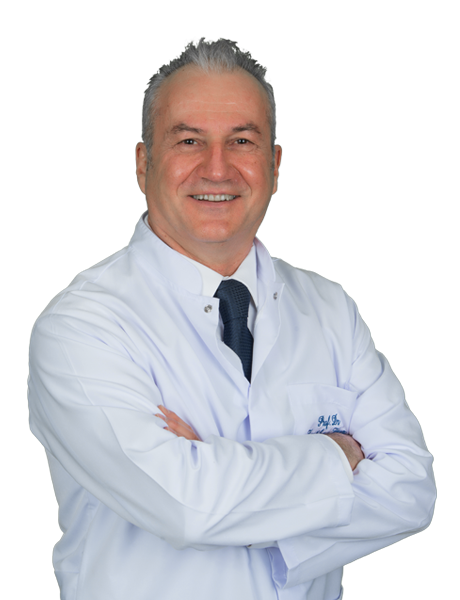Skin is the largest organ that protects our body against external factors and ensures heat insulation. All damages to our skin is called wound. Human body is programmed to heal wounds on its own.
Certain conditions may delay or hinder wound healing. Non-healing or chronic wound implies wounds which persist for 4 to 6 weeks. Several intrinsic (factors related to own body) or extrinsic factors may cause the delay.
Wound care aims to reveal out and eliminate all causes that hinder proper wound healing and to create a milieu that promotes the healing.
Laboratory and imaging tests are used for wound care to determine any underlying diseases or disorders. Then, treatments are planned and necessary precautions are taken by physicians from relevant departments. Wound care is given using tools and instruments of medical wound care.
Medical wound care tools are specially designed according to type of wound and they ensure initiation of next healing phase following pause of wound healing at a certain phase. They are used by wound healing specialists depending on stage and needs of the wound.
Wound care should be given by physicians and other healthcare personnel who are professionally trained in wound care. It should be remembered that improper or incorrect treatment may threaten the wounded limb or even life of patient.
Diagnosis and Treatment Services available in Wound Care Unit
Wound Care at HomeWound care at home aims to make care services available at home for patients who cannot or face difficulty to visit a hospital. Another duty of wound care team providing healthcare services at home is to educate family members and care givers of mostly bed-ridden patients on prevention of new wounds.
Wound Care at Hospital
Certain wounds are not viable for treatment at outpatient or home settings. These wounds usually get infected and therefore, the limb or even the life of patient is under threat due to the infection. Certain patients require treatment by and under supervision of physicians depending on their overall health and/or the body where the wound(s) is/are located.
These patients should be treated at a general hospital or in other words, a hospital that has all medical departments. Close monitoring and frequent wound dressing are crucial for these wounds, which threaten patient’s overall health.
Certain advanced wound treatment services can be rendered only at hospital settings. In such cases, main goal of wound care is to regulate patient’s overall health, follow up the wound at outpatient settings or to prepare the wound for closure through plastic surgery procedures rather than healing the wound.
Who Can Give Wound Care?
Wound care should be given by physicians and other healthcare personnel who are professionally trained in wound care. It should be remembered that improper or incorrect treatment may threaten the wounded limb or even life of patient.
Care and Treatment of Bedsores
Pressure ulcers, also called bedsores, are damages of skin and underlying tissue often appearing on bony prominences secondary to pressure, laceration or both. People who cannot do even the simplest motions on own are at greater risk of pressure ulcers.
Pressure ulcers may affect any part of the body, but vulnerability to pressure ulcer is higher in body parts with thin skin on bony prominences, such as elbows, knees, heels, back and ankles. Pressure ulcers are treatable conditions, but fatal complications are likely, if treatment is not started in a timely manner.
How Do Pressure Ulcers Occur?
Risk of pressure ulcers is pretty high in a person who stays in same position for a long period of time and cannot change position without aid. Ulcer may develop, rapidly widen and deepen and therefore, it may not heal easily.
Blood supply to body parts that are exposed to pressure continuously will impair and tissue death occurs secondary to the circulation disorders in tissues compressed between the bed surface and the bony areas of the body. A wound may develop if blood circulation ceases for 2 hours in bed-ridden patients or for 1 hour in patients who stay in sitting position.
Causes of pressure ulcers are listed below:
- Constant pressure
- Friction
- Tearing
- Moisture
- Constant pressure
If a certain part of skin is constantly exposed to pressure that also involves the bony part, blood may not be properly supplied to the skin and underlying tissues. Pressure is the most important factor that plays role in pressure ulcer. Intensity and duration of pressure as well as tissue tolerance are important in pressure ulcers.
Friction
In case of thin skin or poor blood circulation, changing position of patient or mobilization in an uncontrolled manner may increase the risk of wound by damaging the skin; in such cases, it is necessary to act very carefully and seek help, whenever required.
Tearing
Tear damage occurs when underlying tissues move while the skin remains immobile. Tear effect is the straining, lengthening and curving of blood vessels in deep tissues. Therefore, blood and oxygen supply to the tissues ceases. Blood vessels that attach to membranes of bones and deeply located muscles tear due to the strain. Since the skin with very close contact to the bed surface cannot move freely, the effect of tear principally involves deep tissues that cover bony areas of the body.
Moisture
Moisture affects resistance of epidermis (the uppermost layer of skin) against external factors. A mildly or moderately moist surface makes the friction more potent and thus increases the risk of tear.
Types and Stages of Bedsores
Stages of pressure ulcers vary depending on severity. Besides a classification on a scale of 1 to 4, they are categorized into 6 groups ranging from unstageable pressure ulcers to suspected deep tissue injury. The risk of pressure ulcer in hips is higher for patients with wheelchairs. Pressure ulcers can develop anywhere in the body depending on the body part in contact with bed or wheelchair.
Stages of Pressure Ulcers
Stage 1: Skin appears red and is warm to the touch. Itching is likely.Stages 2 and 3: Painful colorless open wounds or blisters can be seen or the wound may create a “crater” immediately beneath the skin secondary to tissue damage.Stage 4: Severe infections of skin are likely. Muscles, bones and even tendons may be visible.Unstageable wound: Dark brown – black discoloration may be seen in skin. Suspected deep tissue injury: Blisters filled with blood may be visible on skin.
Who Are More Prone to Pressure Ulcer And What Are Risk Factors?
- Patients with poor mobility due to injury, disease or sedation and patients who are bound to bed.
- Patient’s with sensorial deficits secondary to nerve damage caused by spinal injuries or other reasons,
- Paralyzed patients who cannot control certain parts of their body, have high risk for pressure ulcer.
- Elderly patients with impaired tissue tolerance,
- Immobile patients,
- Overweight or too lean patients,
- Anemia,
- Patients with poor nutrition and hydration,
- Skin continuously dampened by urine and stool,
- Sensorial losses such as low pain threshold related to spinal or other injuries,
- Poor blood circulation due to diabetes, vascular diseases, smoking,
- Protein, vitamin C and zinc deficiencies,
- Low cognitive functioning secondary to diseases, disability or medications,
- Patients with impaired lymphatic circulation,
- Febrile diseases increase the risk.
How Are Pressure Sores Treated?
Pressure TreatmentTreatment of pressure ulcers, also called bed sores, includes reducing the pressure over the affected skin area, cleaning the wound, proper wound care, pain management, preventing infection and a good diet.
Team Necessary for Treatment
Treatment of pressure ulcers usually requires a multidisciplinary approach (more than one physician from relevant departments). This team generally consists of;
- A physician who plans and manages the treatment,
- A physician specialized in wound care,
- A wound care nurse
- A home care nurse,
- A psychologist or psychiatrist who may provide support for alleviating concerns of you and your family,
- A physiotherapist who may help recovery of mobility
- A dietitian who monitors your nutritional needs to plan a personalized diet
- A dermatologist,
- An orthopedist or a plastic surgeon.
Reduction of Pressure
Reduction of pressure and friction is the first step of pressure ulcer, as these factors pave the way for development of bedsores. Strategies include these methods:
Repositioning
In case of a pressure ulcer, patients should be repositioned. Frequency of repositioning varies depending on quality of skin that is exposed to pressure while lying or sitting. If a wheelchair is used, patient should be repositioned at hourly intervals and the load bearing on a particular area of skin should be alleviated at 15-minute intervals. If the patient is bedridden, position should be changed once every 2 hours.
Using Support Surfaces
Special beds, pillows and cushions should be used to help sit or lie while vulnerable skin is protected.
Wound Cleaning and Dressing
Care and treatment of pressure ulcers depend on depth of the wound.
Generally, wound cleaning and pressure ulcer dressing is performed as follows;
Cleaning
If the affected skin is intact, it should be gently cleaned and kept dry. Open wounds should be cleaned with antiseptics or clean water whenever the dressing is changed.
Bandage
Modern wound dressings accelerate wound healing by keep the wound humid and clean. They also create a barrier against infection and keep the periphery of wound dry.
Removal of Damaged Tissues
Damaged, dead or infected tissues should be removed from wounds for proper healing. This procedure is called debridement. There are various debridement methods. Use of a certain debridement technique depends on patient, settings of treatment (home, hospital) and decision of the wound care specialist.
Other Interventions
Other medical interventions are listed below:
- Use of medications to manage pain: Some medicines are effective in alleviating pain, but they should be prescribed by your doctor.
- Antibiotics to fight infection: If local wound care does not help prevention of infection, antibiotics can be used under supervision of doctor, after the causative bacterium is isolated in the wound culture.
- Diet: A healthy diet arranged by a dietician may quicken recovery of the wound.
- Wound treatment with negative pressure (vacuum or VAC therapy): It is a scientifically proven treatment which keeps the wound clean and accelerates healing by suctioning the fluid secreted by wound.
Surgery
Surgery may be required for refractory large pressure sores that do not respond to other treatments and progress.
Care and Treatment of Diabetic Foot
What is Diabetic Foot? How does it occur? What Are Causes?Foot sores are very common problems that may threaten life of patients with diabetes mellitus. Studies show that approximately 10-15% of the diabetic patients suffer from diabetic foot at some point of their lives.
Considering 70 million people live in Turkey, studies assume that there are approximately 10-11 million diabetic patients in the country. Which means 1 to 1.5 million diabetic patients will suffer from diabetic foot in one period of their lives.
Worst effect of these wounds is the potential risk of amputation in a part of these patients secondary to such sores. Studies demonstrate that amputations are 15 times more common in diabetic patients in comparison to general population.
It is also estimated that other limb is amputated within 2 years in half of the patients who had already undergone amputation and that they die within 4 years. Therefore; treatment of diabetes and wounds secondary to diabetes should be addressed more seriously than other diseases.
Two basic problems play role in development of wounds in diabetic patients. The first and most important one is the damage to nerves, called neuropathy, and the other one is damage to blood vessels, called vasculopathy.
Motor neuropathy causes weakness and loss of leg muscles, while sensorial neuropathy leads to loss of sensation of pain; on the other hand, autonomous neuropathy results in abnormal gait pattern due to dry skin of feet and also loss in sense of pain and a dry and callous skin, which makes feet extremely vulnerable to sores.
Patient cannot feel the callosity in the foot and the resultant pain. The wound gets infected and therefore, the sore progresses into deeper tissues of foot. Finally, it is recognized when draining is noticed, but the wound has already started threatening the limb at this phase and treatment becomes difficult. Therefore, actual treatment should be prevention of foot sores in diabetic patients.
What Are Symptoms Of Diabetic Foot?
Definition of “diabetic foot” covers all kinds of changes in feet of diabetic patients.
Certain conditions facilitate development of sores in feet of these patients: dry skin of feet; deformities in toes and feet (hammer toes, claw toes); and calluses in sole and skin of toes, heels and other parts of feet that contact to shoes.
Redness, skin of feet feeling warmer to the touch than other body parts, recent-onset ache or pain, swollen feet or toes and draining from the wound should first remind diabetic foot in a diabetic patient.
Which Physicians Treat Diabetic Foot?
A patient with diabetic foot should be assessed by a team of physicians from endocrinology or internal medicine, infectious diseases, orthopedics, cardiovascular surgery, plastic surgery, general surgery and infectious diseases, undersea and hyperbaric medicine and interventional radiology departments for treatment of diabetic foot ulcers.
Any physician of the team can follow up and manage the condition through consultation with other departments.
How Is Diabetic Foot Care Given?
If there is a wound in a diabetic patient’s foot, the care should be first focused on this wound. Although wound dressing is the major step in wound care, reduction of pressure on the wound (use of specific tools and insoles to prevent the patient from bearing load on the wound), treatment of infection (appropriate wound dressing and antibiotherapy), surgical or angiographic treatment of stenosis, if any, in blood vessels of legs and regulation of blood glucose are also critical.
After diabetic foot ulcer disappears, special insoles and shoes should be produced in the light of foot molds and gait analyses to reduce the prolonged or abnormal pressure. All calluses should be properly shaved off by specialists after diabetic patients start wearing appropriate insoles and shoes.
Diabetic patients should use skin moisturizers regularly. Otherwise, dry skin may pave the way for new wounds. Patient should seek diabetic foot examination at 1- to 3-month intervals depending on physician’s decision.
Treatment and follow-up of other risk factors are also very critical. Regulation of blood glucose may not only prevent new wounds, but it may also slow down progression of neuropathy and vasculopathy.
These patients should be convinced to quit smoking, while cholesterol levels and blood pressures should be kept under control, weight loss should be achieved through appropriate diets and they should be motivated to do exercises regularly, if possible.
How Is Wound Dressing Done for Diabetic Foot?
Treatment of diabetic foot is not solely a matter of wound dressing. Diabetic foot ulcers should be dealt with only by physicians who are educated and trained on this health problem. A timely treatment managed by a physician may prevent conditions that endanger both the patient and the limb.
Therefore, patients should visit a physician within the shortest time possible after they recognize diabetic foot ulcers.
Personalized and holistic approach should be adopted for treatment of each patient. The wound should never be left open and contact to water, until a physician is visited who deals with diabetic foot. After the wound and the surrounding skin are cleaned with an appropriate disinfectant, it should be closed with a clean wound dressing and kept closed until the next wound dressing.
The patient should not bear load on the food with wound. Patients should avoid from tightly fitting shoes or ones that puts pressure on the wound.
Nail Care For Diabetic Foot
Patients with diabetic foot should clip toenails very carefully with a sharp nail clipper; toenails should be clipped straight and not too short. Nails should be filed after being clipped. If there is visual problem, this care should be given by another person, preferably a podiatrist.
All care materials should be clean and sterile. One should always remember that immune system of diabetic patients is weaker than other people and they are more vulnerable to infections. Preferably, diabetic patients should have their own set that should be carefully cleaned after each use.
How Is Diabetic Foot Treated?
Diabetic foot ulcer should be treated by a team of well-trained physicians and nurses.
This treatment should be performed at inpatient or outpatient settings depending on overall health of the patient and condition of the wound. For both choices, the treatment is based on elimination of the load on the foot with wound, treatment of infection, patency of occluded blood vessels of legs, appropriate foot care and fighting the risk factors.
Treatment of diabetic foot ulcer may last for weeks or months. “Dead or necrotic tissues” of the wound should be removed with surgical methods. Wound dressing should be regularly done for the wound. Today, there are medical wound dressings and products specifically designed to speed the wound healing.
Those products keep the wound clean and reduce infection, drainage and malodour. They not only boost the comfort of patients, but they may also reduce the need for wound dressing at frequent intervals. Some of these products include collagen, hyaluronic acid and growth factors which are required for wound healing.
“Hyperbaric oxygen (HBO)” therapy is another adjunct treatment modality that is commonly used for treatment of diabetic foot. In HBO therapy, patients are inhale oxygen in high pressure to eliminate poor oxygen supply to the wound site, while cells of the immune system that fight bacteria are recovered and wound-healing activities of cells are boosted – all help speeding and facilitating the wound healing. Laser, ozone therapy and larval therapy are other adjunct therapies.
What Are Considerations For Diabetic Foot?
A diabetic patient should check feet using a mirror regarding discoloration of skin, redness, laceration, blisters and fungal infection as well as a new wound at least once a week, if there is sensorial deficit in foot. If physical condition or visual functions hinder this evaluation, caregiver or a relative should check the foot.
Socks without sleeve band should be preferred and clean socks should be worn every day. Socks should not be too tight and should be made of cotton. Patients should look into and touch inside of shoes to determine whether there is a foreign body or not.
Patients should necessarily prefer comfortable, soft and round-toed shows with rubber sole. Insoles designed specifically according to results of gait analysis should be preferred. Patients should not go barefoot.
Moreover, high heels, narrow shoes or open-toed shoes are not suitable. Lace-up shoes should be preferred as they can be enlarged. Moreover, shoes that are used for long time and worn become less comfortable and lead to problems.
If there is deformity in feet, custom-made shoes should be preferred. When patients buy new shoes, they should not wear them for more than 2 to 3 hours a day until they get used to the new shoes. Feet should not be approximated to heater stove, electric heater and heater cores too much and patients should never try to warm up the feet with hot water bag.
Hospitals
-
 Altunizade Hospital
Altunizade Hospital -
 Ankara Hospital
Ankara Hospital -
 Maslak Hospital
Maslak Hospital














